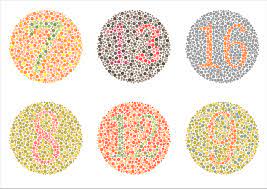What Is Colour Blindness?

The Supreme Court has directed the Film and Television Institute of India (FTII) not to exclude candidates suffering from colour blindness from its courses on film making and editing and asked it to make changes to its curriculum instead.
- Colour blindness is the inability to see colours in the normal way. Colour blind individuals often cannot distinguish between certain colours usually greens and reds, and sometimes blues as well.
- It is also known as colour deficiency.
- Two types of cells in the retina detect light:
- Rods: These help in distinguishing between light and dark.
- Cones: These help in detecting colour.
- There are three types of cones that see colour red, green, and blue and our brains use the information from these cells to perceive colour.
- Colour blindness can be the result of the absence of one or more of these cone cells, or their failure to work properly.
- Colour blindness may be of different kinds and degrees.
- In a situation where all three cone cells are present but one of them is malfunctioning, mild colour blindness may occur.
- Mildly colour blind people often see all colours properly only when the light is good.
- In the most severe kind of colour blindness, vision is black-and-white, that is, everything appears as a shade of grey. This is not very common.
- Causes:
- Congenital Colour Blindness: Most colour blind people are born with the condition (congenital colour blindness).
- Congenital colour vision deficiencies are usually passed on genetically.
- This type of Colour blindness generally affects both eyes, and the condition remains roughly the same for as long as the individual is alive.
- Medical Conditions: A problem with colour vision that arises later in life could be the result of disease, trauma, or ingested toxins.
- If colour blindness arises out of disease, one eye may be affected differently from the other, and the difficulty could worsen over time.
- Medical conditions that may increase the risk of getting colour blindness include glaucoma, diabetes, Alzheimer’s, Parkinson’s, alcoholism, leukaemia, and sickle-cell anaemia.
- Treatment: Colour blindness cannot as yet be treated or reversed




